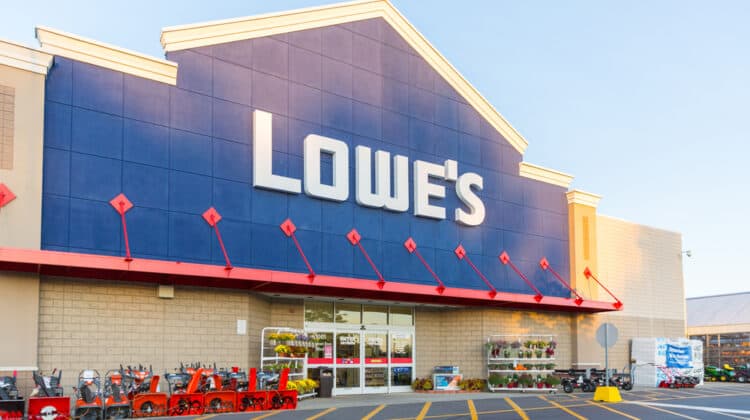
When you’re out shopping at your local grocery store, you might find the produce section has tons of great deals.
Bananas, potatoes, and other types of produce sell for around $1 a pound.
Considering the low prices, you may wonder how farmers make money.
The truth is the average farmer makes around $75,790 a year.
These are farmers with a lot of acreage that allows them to farm different crops in bulk.
However, there’s been an increase in the number of micro-farmers or those who farm on fewer than five acres.
These farmers have been making a lot of money, too, despite the small amount of land that they own.
If you’re interested in farming, whether to provide your family with food or to sell it for a profit, there are a few ways you can go about it.
Here are a few ways you can make money with a farm that’s one acre.
How To Make Money Farming 1 Acre (7 Ways)
1. Microgreens

One way that many farmers are finding success with small plots of land is by growing microgreens.
There are several perks of growing microgreens.
For one, as their name might suggest, they’re small and don’t require a lot of space.
If you have an acre of land, then you can grow tons of microgreens.
They tend to sell for around $50 per pound, but the price fluctuates based on the competition in your area.
Most farmers tend to sell their microgreens to nearby restaurants since they always need them.
However, because that’s the target of many farmers, you can expect competition.
You’ll need to take care of your microgreens to prove that they’re the best.
That might mean investing in some branding and nice packaging to make them stand apart.
Another great benefit of growing microgreens is that it has cheap start-up costs.
You can even grow them in your basement if you have the right trays.
If you want to experiment with your microgreen business, then you can invest in buying two 10” x 20” trays of microgreens.
If it goes well, then you can always upscale.
The soil and seeds, themselves, typically only cost around $2.
Microgreens mature in between three and four weeks, so you can count on a supply almost every month.
This fast growing time is also great for farmers since it means you can sell more during the year and make a higher profit.
Finally, you can also grow them during the winter since you can bring the trays indoors.
This ensures that you’re still making money even when the snow hits.
Microgreens are a niche market for restaurants and grocery stores that pay a lot of money for fresh products.
You don’t need a lot of space to grow them, so it’s possible to grow them on your one-acre farm and make some money.
2. Salad Greens

Another high-value crop is salad greens.
This includes vegetables like lettuce, arugula, and even Asian greens.
A part of growing your salad greens successfully is to understand your market.
For example, if your area has a lot of lettuce growers, then you may want to plant arugula or Asian greens instead.
This allows you to provide something different to the market.
You’re able to set a higher price since you’re one of the few selling that specific type of vegetable in the market.
You can create your own niche market out of it.
Besides understanding the market, it’s also important to know when to plant salad greens.
Like microgreens, they don’t take up a lot of space, so you can grow a pretty large number of them on your one-acre farm.
Salad greens grow best in summer and spring, but you can also find some varieties that grow well in the summer, too.
Like any type of garden, the salad greens will need plenty of sunlight and regular access to water.
They may be a bit more hands-on than microgreens, but if you have some gardening experience, then it shouldn’t be too difficult to handle them.
The start-up costs of buying salad greens are more expensive than microgreens though.
Seeds for these types of vegetables are sold by the pound.
The average price of a single pound is around $30.
That’s enough to get you started if you have 3/4 of an acre.
However, some seed sellers even charge up to $150 for a pound of their seeds.
While it does take some investment on your part, the average price of selling salad greens is around $1,500 a week for 3/4 of an acre if you can stagger your planting and growing.
Most salad greens take around three weeks to grow with lettuce taking the longest at four weeks.
With a proper planting schedule, you can easily make a lot of money during the peak times for planting salad greens.
With a one-acre farm, you can push towards making $2,000 a week.
Salad greens are an effective way to make money on a one-acre farm.
3. Garlic

There’s no question that garlic is one of the best vegetables that you can grow.
It’s a type of product that’s always in demand since it’s used as an ingredient and as a seasoning in many dishes.
There are several different varieties of garlic out there, so it’s important to know which one is in demand in your local market.
Before you buy garlic seeds, first, give the local restaurants around you a call or an email.
If you can determine what their needs are, then you can start planting with some customers in mind already.
Like many other products, garlic sells by the pound, so you’ll want to plant enough to at least have a pound.
The average price of gourmet garlic is around $15 a pound.
Keep in mind that gourmet garlic seeds are going to cost a bit more than average garlic seeds.
That said, you can get a great return on your investment.
Garlic sells for about $8 per square foot of space.
If you wanted to make $40,000 a year growing garlic, then you’d need at least 5,000 square feet to devote to the garlic seeds.
That’s about a tenth of an acre, so you have plenty of room to plant other products, too.
The 5,000 square feet should give you about 2,700 pounds of garlic.
Keep in mind, however, that garlic takes a while to grow.
It’s a good idea to grow a faster vegetable like salad greens or microgreens to earn money in the meantime.
Garlic needs a few months before it’s ready.
Some varieties, like elephant garlic which are larger than standard garlic, need additional time.
That said, you can maximize your returns on your garlic.
Planting 50 pounds of garlic bulbs will net you around 400 to 500 bulbs of garlic when it’s done growing.
While you may need to spend more money on their seeds, you can expect a lot of garlic for your efforts.
Garlic is a great vegetable to grow on a one-acre farm because it’s always in demand.
Being able to cater the type of garlic you grow to your market’s specific needs allows you to maximize your profits.
Since it only needs around a tenth of an acre to bring in a lot of money, you also have plenty of room to grow other produce.
4. Worm Castings

If you’re not sure about farming plants, then you can always try your hand at farming worms.
Worm castings can make you a tidy profit once you become more experienced with them.
The average farmer earns around $15,000 to $150,000 a year based on the quality of their worm castings.
Worm castings, also called vermicast, is a type of fertilizer made by worms.
You essentially get some earthworms and place them in a composting bin.
They eat the compost and produce waste.
The waste then acts as a fertilizer that many farmers use to enrich the soil for their plants.
You can use it for your own garden or sell your fertilizer by the pound.
The average price of fertilizer sells for $5 to $20 a pound.
You can also choose to sell your worms if you end up having too many.
They tend to sell for around $8 to $15.
One of the best things about a worm casting farm is that it doesn’t take up a lot of space.
You can even have them in your home.
With a one-acre farm, if you wanted to devote the entire space to worm castings, then you could make a great profit as a fertilizer maker.
Getting started with worm castings is also easy.
You need a shallow box or bin.
You can find these on the market or simply make one yourself.
Then you need some strips of moist newspaper on the bottom and soil.
Compost is another important layer in the box.
If you don’t have any compost yet, then leaf litter will do.
You’ll need to cover the compost with soil and some more strips of newspaper.
Finally, you’ll need to add table scraps for the worms to eat.
Once their home is ready, you can put in your worms.
It can take a while for your worms to start producing enough worm castings for you to sell.
It largely depends on how many worms you have in the bin.
If you have an acre to devote to your worms, then you could alternate them to ensure you always have castings to sell each week.
In general, worms start producing enough sellable castings in six to eight weeks.
If you don’t want to plant anything on your one-acre farm, then you might want to give farming worms a try instead.
5. Black Soldier Fly Larvae

Another thing you can farm on your acre if you don’t want to grow plants is black soldier fly larvae.
The larvae come from the black soldier fly insect, which resembles a type of wasp.
The larvae, themselves, look like mealworms but they’re a bit healthier than mealworms.
They’re in high demand for farmers who raise chickens or ducks.
That’s because black soldier fly larvae contain 50% protein and have a decent amount of calcium and other nutrients in them, too.
Chicken farmers care a lot about protein since it helps their chickens have healthy feathers and eggs.
The calcium also helps chickens lay eggs easier.
Because they’re a great nutritious meal for chickens, they tend to be in high demand.
Growing black soldier fly larvae is relatively simple, too.
You only need to do a bit of work at the start and check on the interior of their home to make sure it’s healthy.
To start growing larvae, you’ll need a bin with some holes on the bottom to help with oxygen flow and keep the contents inside the bin dry.
Then you’ll need to fill it with some type of compost.
Adding in some table scraps doesn’t hurt either.
Drizzle a bit of water in it to make the bin smell and attract black soldier flies.
They’ll lay their eggs in the heap, and the larvae will grow and consume the compost.
You’ll then need to make an area that catches the worms.
Insert a wide wooden plank in the bin on the side, so it rests at an angle within the bin.
Then place another bin on the other end of the plank that’s sticking out.
The larvae will crawl up the plank and then fall into the second bin, catching them for you.
Over time, you’ll have a bunch of larvae ready for selling.
Keep in mind that flies only live for seven days once they hatch, so they’re always actively looking for an ideal place to lay their eggs.
Farming black soldier fly larvae is a great way to make easy money on your farm, especially if you only have one acre.
You can set up a few bins and have plenty of larvae ready to sell to chicken farmers and pet stores.
6. Mushrooms

One of the benefits of farming mushrooms is that they can grow both indoors and outdoors.
That said, they do require a specific environment in which to grow their best.
A lot of urban farmers, for example, will buy an abandoned factory or another building and then use that to grow their mushrooms.
Since they’re indoors, this enables them to grow mushrooms year-round.
You can grow mushrooms on your one acre of land or split them up with the other plants you’re growing.
There are tons of different kinds of mushrooms that you can grow, too.
The ones that restaurants tend to want the most are Portobello and Oyster Mushrooms.
Oyster Mushrooms, in particular, are delicacies in many parts of the world.
As a result, you can often sell them at a high price.
Mushroom farming is a bit more advanced than growing vegetables because they’re fungi.
They have a different method of pollinating themselves and undergo a process called fruiting.
Harvesting your mushrooms too early can keep you from being able to grow more in the future.
That said, it takes around 18 to 21 days for mushrooms to reach their harvestable age.
Even then, it may take you 16 to 35 days to harvest them all.
Most of the process involves inspecting the mushrooms to determine which ones are mature and which ones still need some time.
If you only choose to delegate around 500 square feet to your mushrooms, you can expect to grow around 12,000 pounds of mushrooms.
Most mushrooms sell for around $6 to $8 a pound.
Clearly, you can make a great profit with mushrooms if you can nail down the particulars of growing fungi.
On a one-acre farm, you can have several thousand mushrooms waiting for restaurants to buy them.
7. Ginseng

If you know you want to farm for the long haul, then you might want to consider planting ginseng.
This type of plant is best for those who live in heavily shaded areas.
For example, if your farm happens to be in the woods or surrounded by trees, then you may have an ideal environment for growing ginseng.
They grow best when shaded beneath canopies of hardwood trees.
Since wild ginseng is difficult to find, and ginseng grown in open fields doesn’t have much value, if you have the right environment, then you can earn a lot of money from your ginseng.
Planting them is also relatively easy.
You only need to rake away leaves from the area, then place the seeds in the ground.
It doesn’t require fertilizer.
From there, you have to wait some time for the ginseng to grow.
It can take anywhere from five to 10 years for ginseng to reach the appropriate size to sell on the market.
That said, you can sell them for a high profit margin.
Ginseng tends to sell for $300 to $400 a pound.
When the market favors ginseng, you can look to make around $50,000 per acre.
If your one-acre farm favors ginseng’s environment requires, then you could end up making a decent amount of money.
Conclusion
There are tons of farming opportunities for farmers who only have one acre of land.
By understanding what plants and vegetables are the most profitable, you can maximize your earnings with the small space that you have.
Understanding your local market is also key to your financial success.
NEXT: How Much Does It Cost To Build An Earthship? (Updated 2023)























Thanks for your article about 1-acre farming; I found it helpful and an excellent start for someone hoping to do profitable small-scale commercial agriculture.